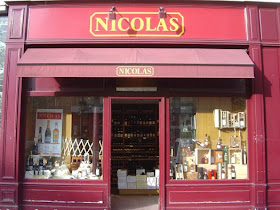What
are three physical characteristics habitually found in wine?
Nose,
legs and body.
What
is the table condiment invariably found in a red Côtes du Rhône?
Pepper.
What
other elements of the larder or pantry make their way in?
Spices,
berries, fruits, liquorice, chocolate, jam, plums, aniseed, raisins,
vanilla, coffee.
What
intangibles, not of the pantry or larder specifically, may be found
in both red and white CDR?
Roundness,
concentration, bouquet, palate, finish, undertones, firmness,
structure, complexity, structure, fullness, notes, suppleness,
earthiness, subtlety, minerality, depth, florality, aromas, length,
finesse, integration, smoothness, character, intensity, balance,
grip, elegance, bigness, crispness, vibrancy, richness, raciness,
softness.
And
might any of these terms be used, jointly or severally, with respect
to just about any wine you have ever come across in your life?
They
might.
What
idea may one articulate of any red wine at a wine tasting or other
assessment, with almost complete impunity?
The
2009 is ready for drinking now, but could benefit from being laid
down for a few more years.
What
ludic-sounding seasonal comestible is deemed good with just about any
red you care to mention?
Game.
And
in the absence of game?
Cheese,
beef.
What
phrase, redolent of a state unattainable in this world, accompanies
these items?
Perfect
with.
Name
an acceptable variation on this phrase
Perfect
for.
What
summer events, occurences or pastimes in particular may a wine be
deemed perfect for?
Picnics,
barbeques.
But
not?
Archery
contests, mosquito bites, exams, scuba-diving, bush fires.
A
wine-maker may fall into one of two categories. What are these two
categories?
Exciting
new; well-respected.
The
inclusion of either phrase in the description of the wine will do
what to the purchase price?
Add
a substantial mark-up.
And
what reflexive use of the lungs and head does one employ at the
mention of the price of a White Burgundy?
Sighing,
head-shaking.
Accompanied
by what gnomic countervailing assertion?
This
is all right if you've got deep pockets, but honestly, a Chilean
Sauvignon Blanc would do the job just as well.
Followed
by what indications, jointly or severally, of the Chilean wine's
suitability for the task?
Its
crispness, freshness, good acidity, hints of citrus, zestiness,
approachability, texture, minerality.
Accompanied,
but not invariably, by?
Notes
of tropical fruits, hints of melon, delightful suitability as an
apéritif.
A
glass of Champagne is frequently held up to the light to admire what
chromatic characteristic?
Its
straw colour.
Not
be confused with?
The
grassiness of many a Sauvignon Blanc.
Is
it the case that there are times when only Champagne will do?
It
is.
On
account of?
Its
elegance, biscuity quality, fine mousse, finish, style,
bottle-ageing, complexity and, let's be perfectly frank, snob appeal.
Given
the nature of the world we live in, what value would you ascribe to
that last quality?
Considerable.
Giving
the lie to what hoary apothegm?
You
can't judge a wine by its label.
What
are you drinking at the moment?
Canaletto
Pinot Grigio, marked down to £5.99
at Waitrose.
What
hasty conculsion did you draw when you caught sight of the
clearly-advertised in-store price reduction?
They've
overstocked again.
What
bisyllabic epithet most pertinently sums up the drinking qualities of
this wine?
Easy.
What
quadrisyllabic epithet most pertinently sums up its desirability in
your own eyes?
Affordable.
What
dismissive trisyllabic epithet most pertinently sums up this wine's
rarity, or lack of same, and by extension, the status and defining
quality not only of the wine but of the drinker himself?
Everyday.
Thank
you. That will be all
CJ (With apologies to the late Myles na Gopaleen)



